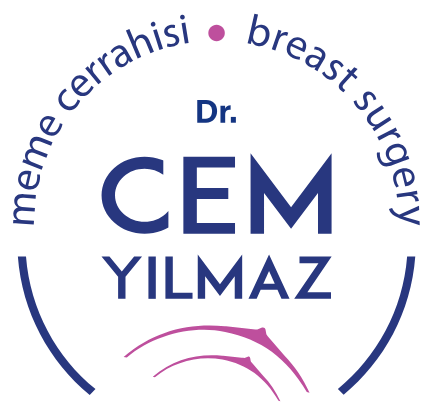Saturday: 08:00 - 14:00
Symptoms of Breast Cancer
Breast health centers are private healthcare institutions that provide services to protect the breast health of women and men. These centers offer early diagnosis and treatment for many breast conditions, especially breast cancer. Through breast health centers, risk factor identification, regular screenings, and individualized treatment plans are professionally conducted.
Why is Breast Health Important?
Breast health plays a critical role not only in cancer prevention but also in improving overall quality of life. Early diagnosis significantly increases treatment success and prevents the disease from reaching advanced stages. Therefore, centers that prioritize breast health are of great value to public health.
What Services Are Provided at a Breast Health Center?
A breast health center provides services with a multidisciplinary approach. These centers employ specialists from various fields, such as radiologists, general surgeons, oncologists, and psychologists. Key services include mammography, ultrasound, biopsy, genetic testing, risk assessment, and treatment planning.
Who Are Breast Health Centers Suitable For?
Breast health centers serve everyone, regardless of age or gender. They are especially helpful for those with a family history of breast cancer. Individuals with breast cancer, women over 40, and those who notice pain, swelling, or a lump in the breast area should seek support from these centers. Young women are also recommended to undergo regular screening as part of preventive health services.
What Tests Are Performed at a Breast Health Center?
- Mammography: The gold standard for breast cancer screening in women over 40.
- Ultrasonography: Young women It is a more suitable imaging method for individuals in the 16-18 age group.
- MRI: Used for detailed examination in high-risk patients.
- Biopsy: A tissue sample is taken for definitive diagnosis of a suspicious mass.
- Genetic Testing: Mutations such as BRCA1 and BRCA2 are investigated.
When to Consult a Breast Health Center?
Even without any symptoms, it is recommended that every woman aged 40 and older visit a breast health center once a year. If you experience symptoms such as breast tissue pain, swelling, discharge, color change, or nipple retraction, it's important to see a specialist immediately. Individuals with a family history of breast cancer should begin screening at a younger age.
What is the Role of Breast Health Centers?
These centers not only provide diagnosis but also treatment and psychological support. They offer a comprehensive service that includes raising women's awareness, educational seminars, breast self-examination training, and individual follow-up systems. In this way, they make a significant difference in the fight against the disease.
How Does the Treatment Process Work at a Breast Health Center?
After diagnosis, a personalized treatment plan is developed for each patient. This plan typically includes procedures such as surgery, chemotherapy, radiotherapy, and hormone therapy. Throughout the treatment process, the patient is monitored and supported in coordination with all relevant units. These centers aim to be there for the patient at every stage of the process.
What to Consider When Choosing a Breast Health Center?
The center's expert staff, technological equipment, and patient follow-up services should be the deciding factors in choosing a center. At the same time, the center's integrated work with oncology and the coordinated work of different specialties is also crucial. The counseling and psychological support services it offers to patients should also be among the selection criteria.
Breast Health Center and the Importance of Early Diagnosis
Early diagnosis is lifesaving in breast cancer. Breast health centers encourage individuals to develop regular checkups. Lesions detected at an early stage can be eliminated in a shorter time and with less aggressive treatment. This, in turn, maintains a high quality of life for patients.
Frequently Asked Questions About the Breast Health Center
How many visits to the breast health center per year? How often should I visit a breast health center?
The general recommendation is to have a regular checkup at a breast health center every year after age 40. For individuals with a family history or at high risk, this frequency may be shorter with a doctor's recommendation.
Are the tests performed at breast health centers painful?
No, u
It takes a considerable amount of time for a cancerous cell within the breast to form a tumor, which a specialist can detect during an examination or for it to be apparent on a radiological examination. Women can usually detect a lump measuring at least 1 cm by palpation. Today, most breast cancers are found through self-examination. Cancerous lumps are hard, have irregular edges, a rough surface, and are difficult to move within the breast tissue. If the cancer has metastasized (spread) to distant organs, these spreads are rarely the first signs of breast cancer. The most common sites of spread are the hip and spine, lungs, and liver.
However, some patients may not have any of these symptoms, and the cancer may be detected only through a mammogram. If you experience at least one of the following symptoms, you should consult a specialist immediately.
Main Symptoms That May Indicate Breast Cancer
- A palpable lump in the breast or armpit (hardness, swelling)
- Discharge from the nipple (bloody or clear from a single duct)
- Inward retraction, indentation, or deformity of the nipple
- Changes to the nipple skin (peeling, crusting)
- Sores or redness on the breast skin
- Swelling, swelling, or inward retraction of the breast skin (orange peel) (appearance)
- Breast enlargement, deformity, or asymmetry, or change in color (redness, etc.)
Breast Lump
Many women notice a hardness in their breasts at some point in their lives. While cancer may be the first thing that comes to mind, the majority of these lumps are benign tumors. However, every situation must be evaluated clinically.
A palpable lump can be one of two different structures. It can be a fluid-filled sac. This is what we call a cyst. Cysts usually grow larger and are painful during menstruation. They are more common in the 40s, especially before menopause. Another possibility is that the mass is filled with a different type of tissue; this is called a solid mass. The best way to distinguish these two types of structures is to examine the mass with an ultrasound.
Nipple Discharge
Every woman may experience discharge from the nipple at various times. A yellow-green, milky discharge, especially when the nipple is squeezed, is considered normal. In non-pregnant women, milk discharge from the nipple is not a sign of cancer; it may be related to hormonal changes in the body. In terms of cancer, the discharge should come spontaneously, without squeezing the nipple. This is noticeable as a wetting of the bra or underwear. A dark brown, black, or blood-colored discharge is particularly significant. In such cases, a sample of the discharge from the nipple should be taken for laboratory analysis.
Breast Cyst
Cysts are generally benign tumors of the breast. Their size ranges from a few millimeters to a few centimeters. It is rare in women under 25 and more common in women approaching menopause.
Cysts can be drained with a needle and the fluid inside examined. If the cyst contains bloody fluid, it must be surgically removed and examined. If a cyst develops in a woman receiving postmenopausal hormone therapy, the fluid must be examined by pathology, whether or not it contains blood.
If a cyst recurs within 4-6 weeks after being drained with a needle, surgical removal may be recommended. Additionally, if a portion of the cyst contains a structure other than solid breast tissue, surgical removal is also recommended.
Solid Mass
A solid mass is a lump in the breast that does not contain fluid but is filled with different types of cells. Solid masses have a higher probability of being cancerous than cysts. A solid lump detected in the breast of a woman over 40 is considered cancerous until proven otherwise, and therefore, it should be investigated.
A lump detected in the breast is evaluated with mammography and ultrasound to determine the possibility of cancer. It is not possible to make a definitive diagnosis with these methods. However, a definitive diagnosis can be made by examining a sample taken from the mass in a pathology examination.


